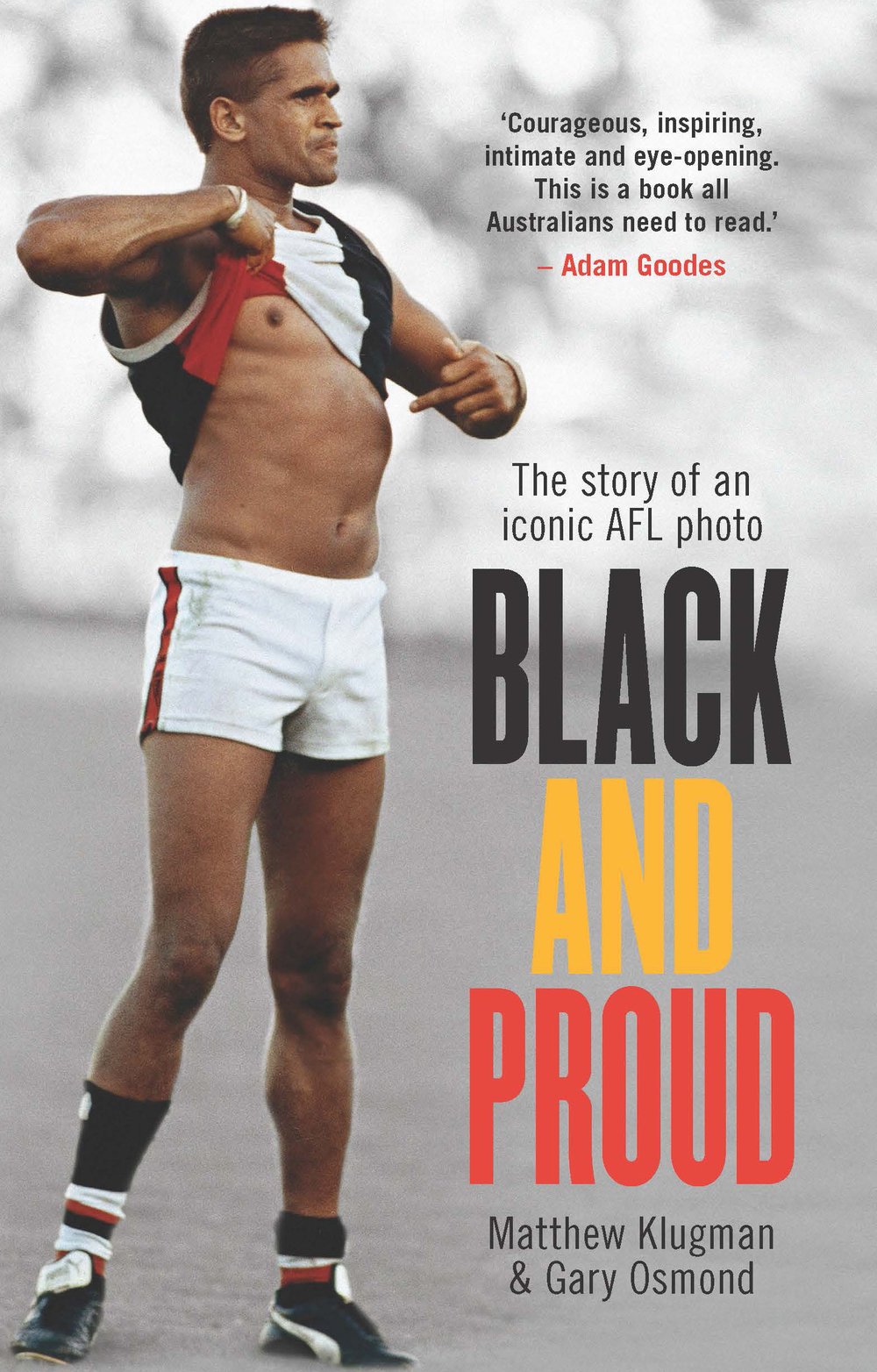When AFL great Nicky Winmar faced the racist taunts of a 1993 crowd and declared ‘I'm black and I'm proud to be black’, Australian race relations made the headlines in a uniquely enduring way. Matthew Klugman and Gary Osmond's book Black and Proud tells the story of the iconic photo of Winmar that has lost none of its potency 20 years later.
The best photos do more than freeze time. They capture a moment and take us there, making witnesses of us all. Here lies their power to inspire, touch and transform. A power tied to the stories, hopes, dreams and struggles that shape our lives. The image of the Indigenous AFL footballer Nicky Winmar pointing with pride to his skin in 1993 in response to racial abuse is one of these. Reproduced countless times, it has graced posters, galleries and city walls. And now a football game shall commemorate it. For the AFL has announced that the 2014 Indigenous Round will feature a game between St Kilda and Collingwood to celebrate Winmar’s famous gesture.
Those who might question the need to still celebrate the photo and action depicted need only go back to the comments Adam Goodes made in late October on NITV’s Living Black In Conversation. The most moving part of the interview concerned Goodes’ reaction to the way he was vilified in May this year. Being called an ‘ape’ was ‘just shattering’.
Racism in the AFL was supposed to have stopped after the cumulative effect of Winmar’s gesture in 1993, Michael Long’s public demand in 1995 that the AFL move against on-field racial abuse, and the AFL’s subsequent development of the groundbreaking Rule 30 to ‘combat Racial and Religious Vilification’. And yet, the last few years have seen the AFL plagued by a stream of racist incidents. Not only has abuse continued to occur, but much of the public response to the denigration of Goodes was disturbing. Many people simply didn’t understand why he was so offended and advised him to harden up and deal with such ‘trivial’ insults.
Unfortunately the link between racist abuse and assumptions of Indigenous inferiority has been lost. And not for the first time. Indeed, what struck us is just how frequently key moments in the struggle for Indigenous rights featured on the front pages of newspapers and then disappeared from public memory. Somehow there was no enduring story of Australia’s highly problematic race relations for these moments to become part of.
The photos of Winmar are an intriguing exception. Australian Rules football is the language of much of Australia. What happens on footy ovals at the elite level is likely to be remembered, debated and told over and over again. And Winmar’s stunning statement brought race into the heart of this conversation. The power of the image facilitated important change. But for the underlying causes of racism to be addressed, we need to begin remembering more than just Winmar’s action.
Not only do we need to know about Nicky Winmar’s gesture of pride and defiance, we also need to stories of Indigenous resistance, power, pride and triumph. Until they are remembered, Australian Rules football, and Australian society more generally, will remain a site of unwitting, as well as witting, expressions of racism. It’s hard to think of a more compelling justification for the importance of history.
This is an edited version of an article published in The Conversationin October 2013. Black and Proud: The story of an iconic AFL photo by Matthew Klugman and Gary Osmond is published by NewSouth in November 2013.


